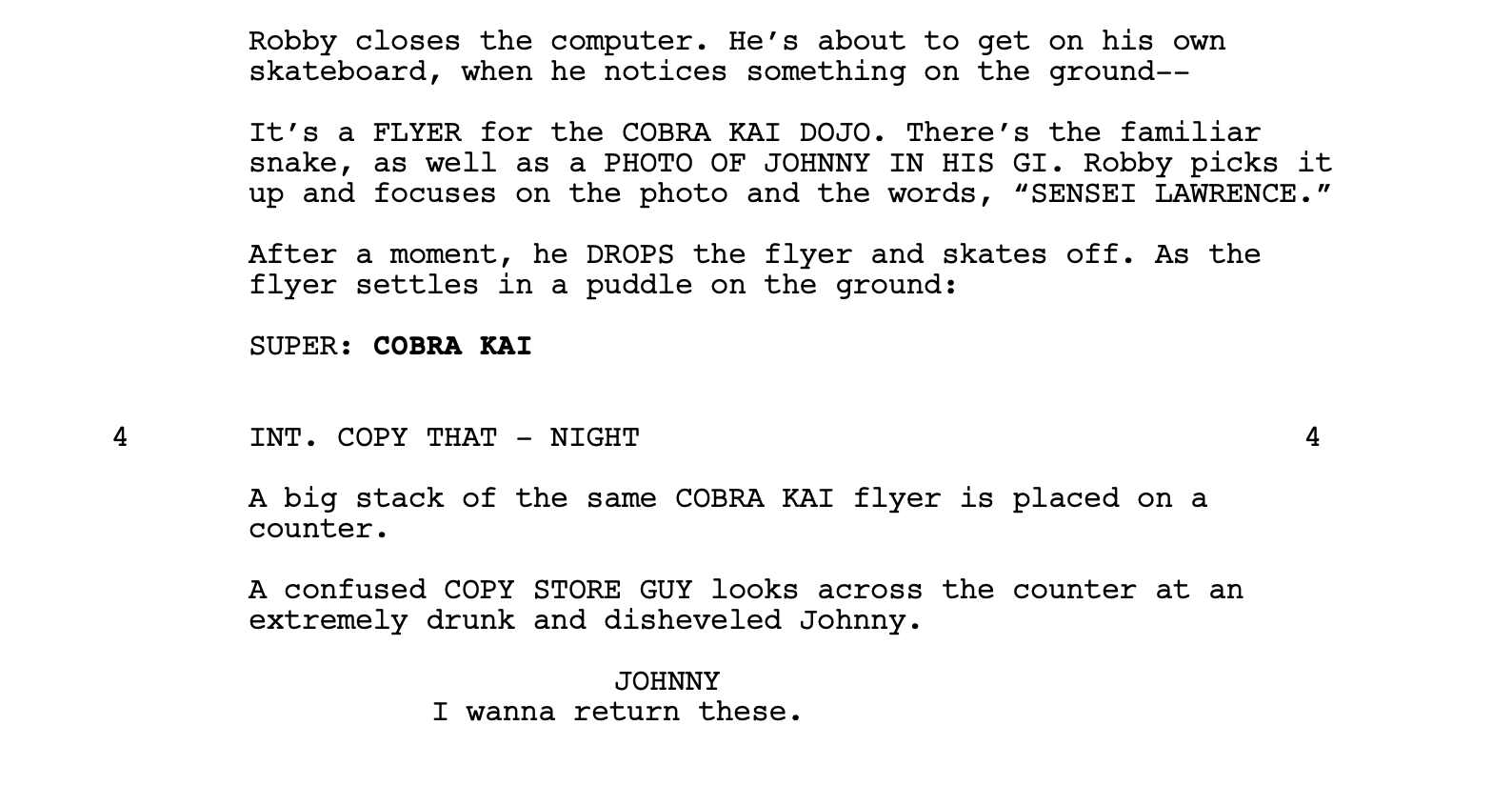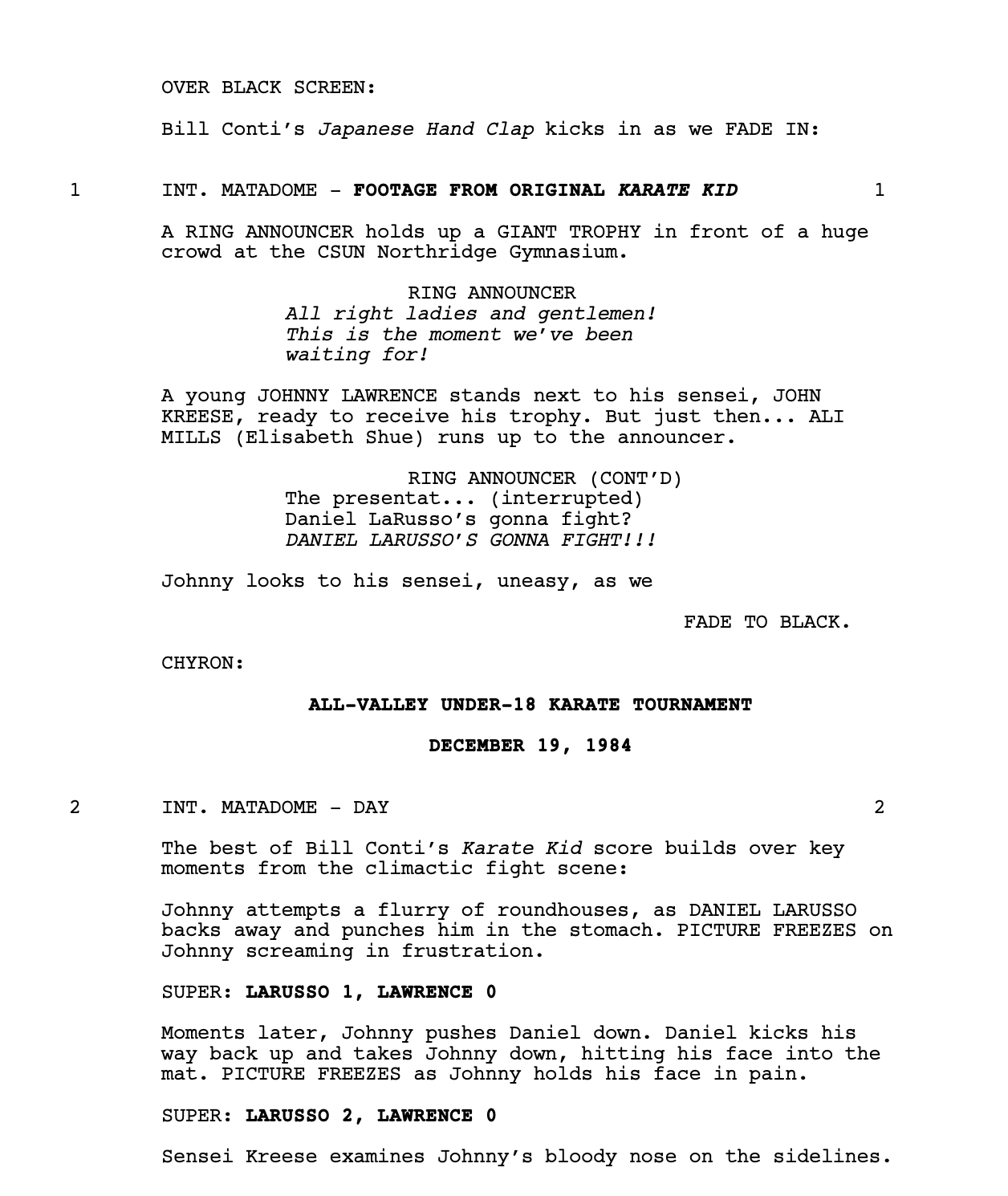FORMATTING YOUR SPEC SCRIPT WHILE SOCIAL DISTANCING: A PRIMER, PART 13
Look! Another fellowship season is upon us! Just as we did last year — in lieu of the library being open for in-person visits — we’ll continue to post formatting information for popular shows here on the blog. We’ll do more posts as we get more scripts. If you’re spec-ing a show that we’ve included on the blog, but have more specific/targeted questions, please e-mail us at library@wgfoundation.org. Similarly, if you notice something in the post that doesn’t make sense or that you want further clarification about, do let us know. We try our best with these posts, but we don’t always notice every detail about the formatting. Your questions help us to keep things more accurate and up-to-date.
If we haven’t covered the show you’re spec-ing, we probably don’t have scripts for it (yet), but you can always e-mail us to find out. We’re actively trying to get as many of the accepted shows as possible and will cover all of them in batches as we get them.
Remember when e-mailing the library for help that we are unable to send you full scripts. It’s not because we don’t like you or because we’re mean librarians who want to hoard all the materials. It’s because of copyright. The scripts are unpublished materials that belong to the writers and studios who produced them, and they are not ours to distribute.
If you’re unfamiliar with them, there are some great websites for reading TV scripts, particularly pilots, on the web. One of our favorites is Lee Thompson’s TV Writing Google site.
As always, happy writing and we hope we’ll see you in the library soon!
COBRA KAI (Netflix)
Average page count: 35
Average scene count: 30-ish
Broken into acts? No
Other things to consider:
Scripts open without a lot of fanfare. The writing is very straightforward.
While the scripts aren't broken into acts, a few pages in, there's always a main title cue. It's formatted like "SUPER: COBRA KAI" (with COBRA KAI in bold) on the left side of the page.
Occasionally, text (or footage) that's seen on screen is listed in bold. Music selection in italics.
In writing fight scenes, the description will sometimes specify whether we're on the mat or in the crowd. See example below. Description often includes specific karate moves, so knowledge of karate will help when spec-ing this show.
Scripts end with "END OF EPISODE" underlined, CAPITALIZED and centered.
DOOM PATROL (HBO Max)
Average page count: 50-52
Average scene count: about 60
Broken into acts: No
Other things to consider:
Scene headings in all of the Doom Patrol scripts are underlined.
2-6 pages into the script, there’s often a title cue, formatted: D O O M P A T R O L. The title is centered.
In many episodes, there are flashbacks. Flashbacks are all written in italics and the year is usually specified in the scene heading with a parenthetical.
Text on screen/chyrons are in bold. Sometimes significant bits of action are also in bold.
Each script ends with “END OF EPISODE.” in capital letters. Alignment for this is casual. Sometimes it’s on the left. Sometimes it’s centered or on the right.
EUPHORIA (HBO)
Average page count: 60-63 (a few more or a few less is okay)
Average scene count: 92-123
Broken into acts? No
Other Things to Consider:
Occasionally episodes open with “FADE IN:” on lefthand side.
Description features short, punchy, profane sentences.
Significant action/props/items are CAPITALIZED for EMPHASIS. Sometimes underlined.
Every once in a while, a bolded parenthetical denotes stylistic influences to really give a sense of the visuals on screen.
Montages are done with bulleted dashes.
Text messages and texted chats are in bold.
If somebody sings, it’s in italic…. Characters’ feelings are sometimes italicized.
Scripts end with “END OF EPISODE.” on the right side. Sometimes this is preceded by a “CUT TO BLACK:”
GENTEFIED (Netflix)
Average page count: 28-30
Average scene count: 25-30
Broken into acts? No
Other things to consider:
Scripts have no teaser but there is a title cue. It occurs anywhere from page 1 to 4. TITLES UP: GENTEFIED — CAPITALIZED, bolded on the left side.
Occasionally, significant actions, song titles and moments are in bold in the text.
Characters alternate sometimes between Spanish and English in the dialogue. Pop’s dialogue in the first season is always in Spanish.
Sometimes there’s an accompanying translation. Sometimes there isn’t. Use your best judgement for what’s required in your spec. Translations are typically done in dual dialogue as in the example below.
Each script ends with “END OF EPISODE”, centered, CAPITALIZED, bolded and underlined.
STARGIRL (DC Universe/The CW)
Average page count: 51-58
Average scene count: 80-87
Broken into acts? No
Other things to consider:
Scene headings in bold, CAPITALIZED, underlined.
Significant bits of dialogue are underlined for emphasis. Significant props, actions are CAPITALIZED.
See example below for formatting the title cue S T A R G I R L. The title usually occurs on or around page 4. Yes, it almost always includes the “SMASH TO:” transitions.
Telepathic dialogue or dialogue spoken in another language is noted with a parenthetical.
Onomatopoeia is often utilized in action sequences. BRRSSSHHH!!! SCREEEEECH!! and italicized.
Flashbacks are simply noted in the scene heading, i.e. - INT. RICK’S FARMHOUSE - LIVING ROOM - NIGHT (FLASHBACK)
The scripts aren’t broken into acts, but most scripts end with what feels like an act out or serial cliffhanger. Sometimes the last line is even italicized.
Scripts end with: SMASH TO: (Right side), BLACK. (Left), END OF EPISODE (Center), bolded and underlined.
UPLOAD (Amazon)
Average page count: 30 (more or less)
Average scene count: 38 (more or less)
Broken into acts? No.
Other things to consider:
Scripts are not broken into acts. Most open without any special formatting. The writing is simple.
The biggest formatting consideration with Upload is that when characters are watching things on screen, the text is written in italics.
Most of the time, scripts end with END OF EPISODE on the left side.... CAPITALIZED, bolded and underlined.












